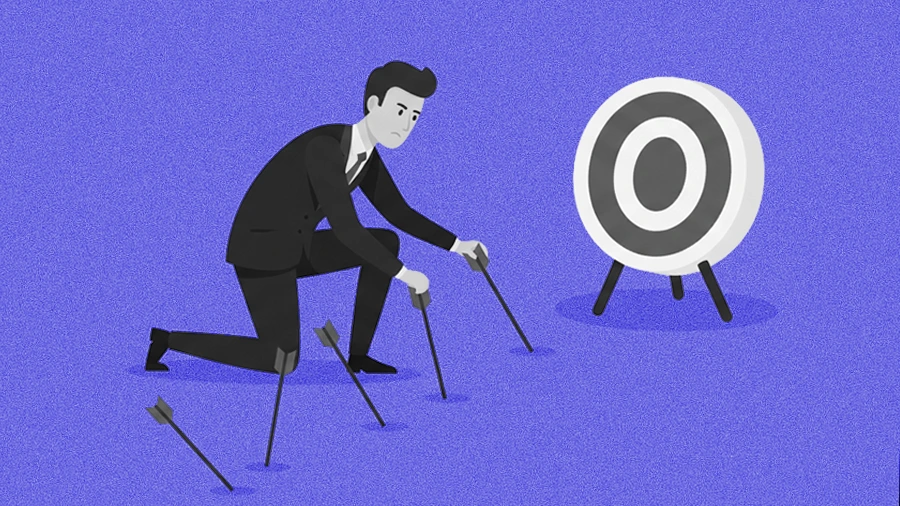
All articles
How Misaligned CX Roles Are Undermining Customer Journeys (And How To Break Free)
Aurelia Pollet, VP of Customer Experience at CarParts.com, outlines how clearly defining CX strengthens accountability, aligns teams, and drives measurable business impact.

Key Points
Companies often blur CX with customer service and success, which creates broken handoffs and weak accountability across the customer journey.
Aurelia Pollet, Vice President of Customer Experience at CarParts.com, explains that CX is a distinct, enterprise-wide discipline responsible for aligning promises with delivery.
She defines the solution as treating CX as a measurable growth driver, focusing on reliability, financial impact, and clear ownership supported by data and AI.
We are the connecting tissue that makes the entire journey feel like one brand from beginning to end. CX looks at everything from the moment someone sees an ad to the moment they use the product, and our job is to make sure that what the company promises is actually what the customer gets.
Customer experience is not customer service. It isn’t customer success, either. While the terms are often used interchangeably, they are fundamentally distinct disciplines. Blur these roles, and the responsibility for a customer’s journey becomes ambiguous. Promises made in one corner of the company fall apart in another, teams assume someone else is handling the details, and customers end up feeling the seams that were never meant to show.
The clarity gap is one that Aurelia Pollet, Vice President of Customer Experience at CarParts.com, knows well. Her twenty years across Louis Vuitton, Exemplis, and ecommerce show a consistent truth. When CX is not clearly defined, the customer journey drifts, teams make assumptions, and accountability fades. Her point resonates because it reflects a simple reality: CX cannot drive results if people misunderstand the job.
"We are the connecting tissue that makes the entire journey feel like one brand from beginning to end. Support and success are part of the experience, but they aren't the experience. CX looks at everything from the moment someone sees an ad to the moment they use the product, and our job is to make sure that what the company promises is actually what the customer gets," says Pollet.
Handoff hazards: Without this connecting tissue, Pollet notes, the customer journey starts to split across departments. The experience becomes disjointed, the brand promise weakens, and classic trouble spots like the handoff from sales to customer success turn into real points of failure. "You have not-so-great handoffs. Usually, this is where the experience falls apart because it goes from one team to another team, and they don't necessarily come together to see how it goes."
Broken promises: Even more subtle are the hidden promises that different teams make without realizing the consequences. Product, engineering, merchandising, and marketing all play a role in setting expectations. And yet, if those expectations aren’t coordinated, customers pay the price. "If you're in technology, you're responsible for the e-commerce platform; you're not going to look at delivery. Why would you? But on your platform, you're saying we can deliver in two days. So that better be true," she says.
Too often, CX is framed as a reactive function or a cost center. Pollet rejects that outright. To her, CX should operate as a forward-looking engine for growth that identifies unmet needs, evaluates new opportunities, and proactively shapes the long-term customer relationship.
Everyone wins: Pollet pushes CX far beyond troubleshooting. "The question is, is there an opportunity to sell more things that people need, and how do we present that along this experience?" For her, CX only works when it creates real value on both sides. "The best way to present any project is to show the ROI by explaining what is in it for the customer and what is in it for the company. If you can only answer one and not the other, something is wrong," she explains.
The bottom line: To earn a seat at the table, success with this framework means CX leaders must speak the language of the C-suite: dollars, LTV, and ROI. For Pollet, the focus on business impact culminates in a single, uncompromising metric "At the end of the day, there's only one metric, and it's sales. It's money. We have to be honest with that. Customers that are happy will spend more money, so if you're not growing or getting more margin, then you're not on the right track."
From fluff to finance: Pollet’s philosophy centers on reliability over theatrics. True loyalty, she argues, comes from delivering what was promised, not from unscalable moments of delight. "We love in CX to say we need to delight our customers. But we just need to deliver on what we said we were going to do. The delight part is a plus. If the beds at the Ritz Carlton were bumpy and the people were rude, you could give them all the perks and it wouldn't work." That belief drives her insistence on quantifiable impact. "It's not fluff if you can say 'we changed this and the outcome was better conversion and better loyalty.' Those are hard metrics you cannot argue with," she says.
Her pragmatism extends to her implementation of AI, which she uses primarily as a diagnostic tool for a large-scale operation of 200 agents. Its greatest strength, she explains, is its inability to "overcompensate" for flawed procedures the way human teams do, as it reveals an organization's own broken processes.
Behind the curtain: Pollet sees AI as the quickest way to uncover what's actually happening in the customer experience. "It lets us see the things that were covered by customer service teams who were fixing the experience with what they had, but not fixing the root cause. They were overcompensating for weak systems, but AI cannot do that," she says.
Ultimately, Pollet frames the industry’s next hurdle not as technology or tools, but legitimacy. CX remains too easy to misunderstand, too easy to minimize, and too easy to mistake for support or service. She believes that must change for companies to compete. "What do we need to do for CX to become a discipline and not just a fluffy word? If people hear CX and don't immediately understand the work, then the field has work to do. Marketing and finance carry instant clarity. CX deserves the same," she concludes.







